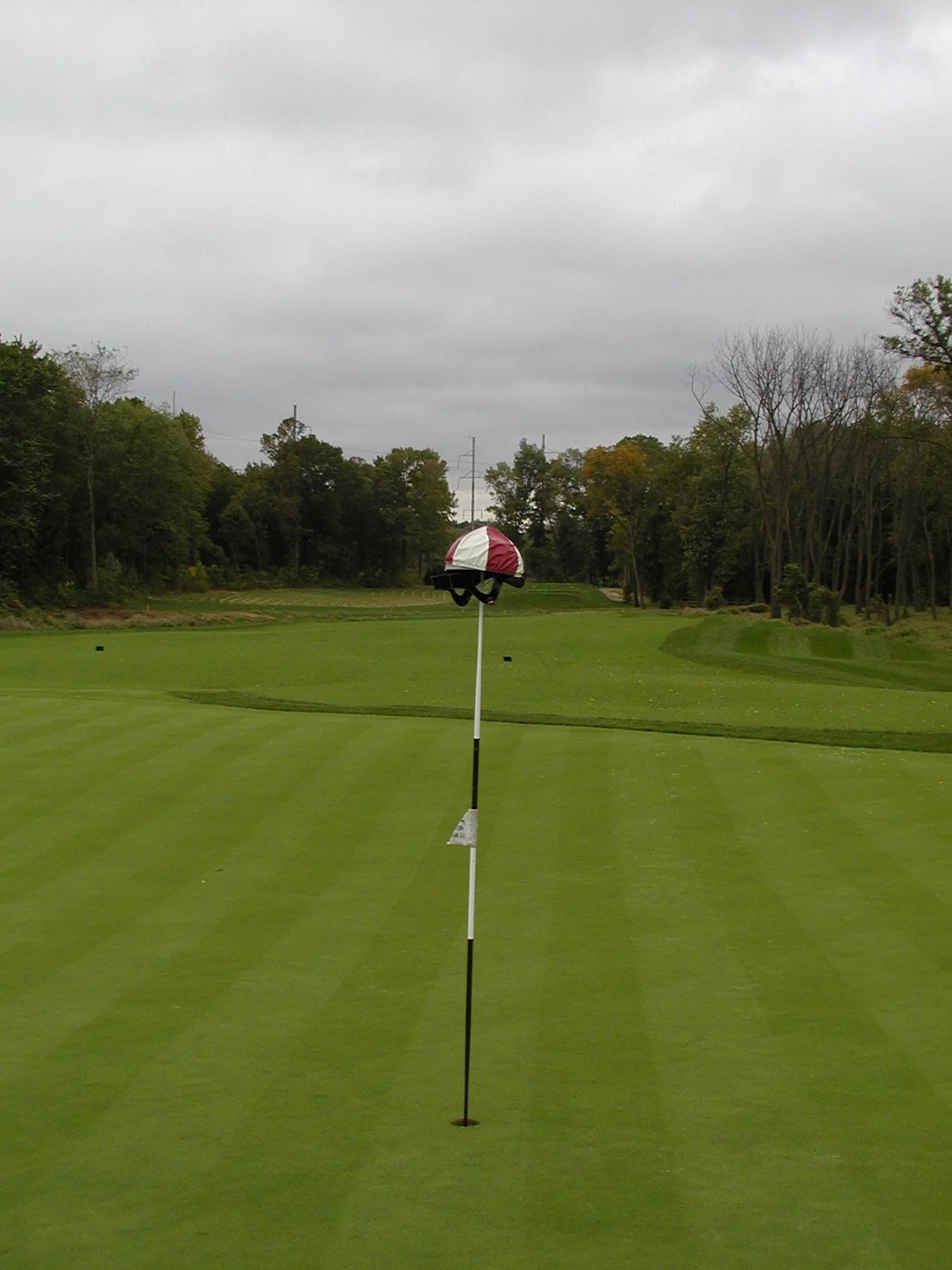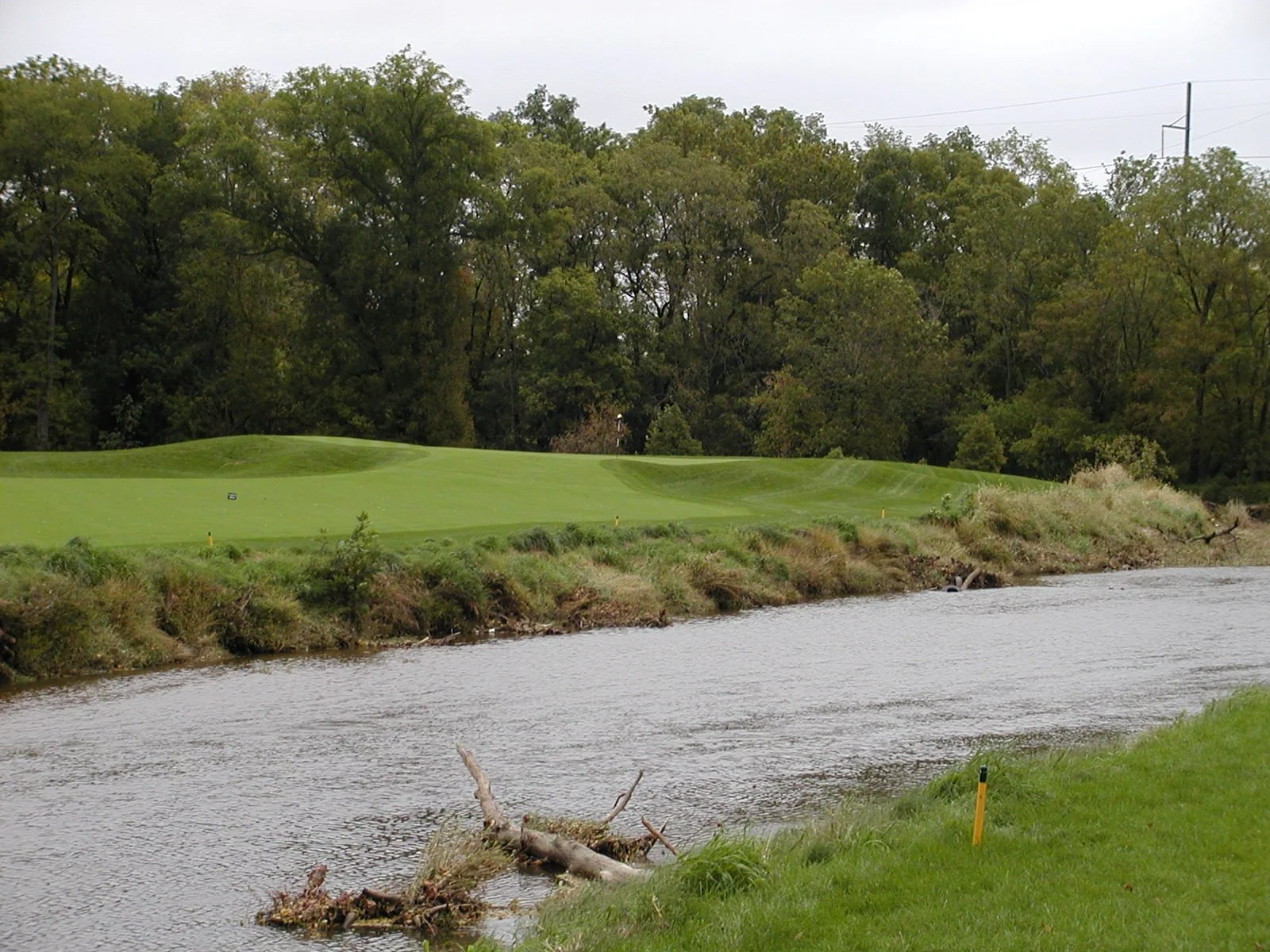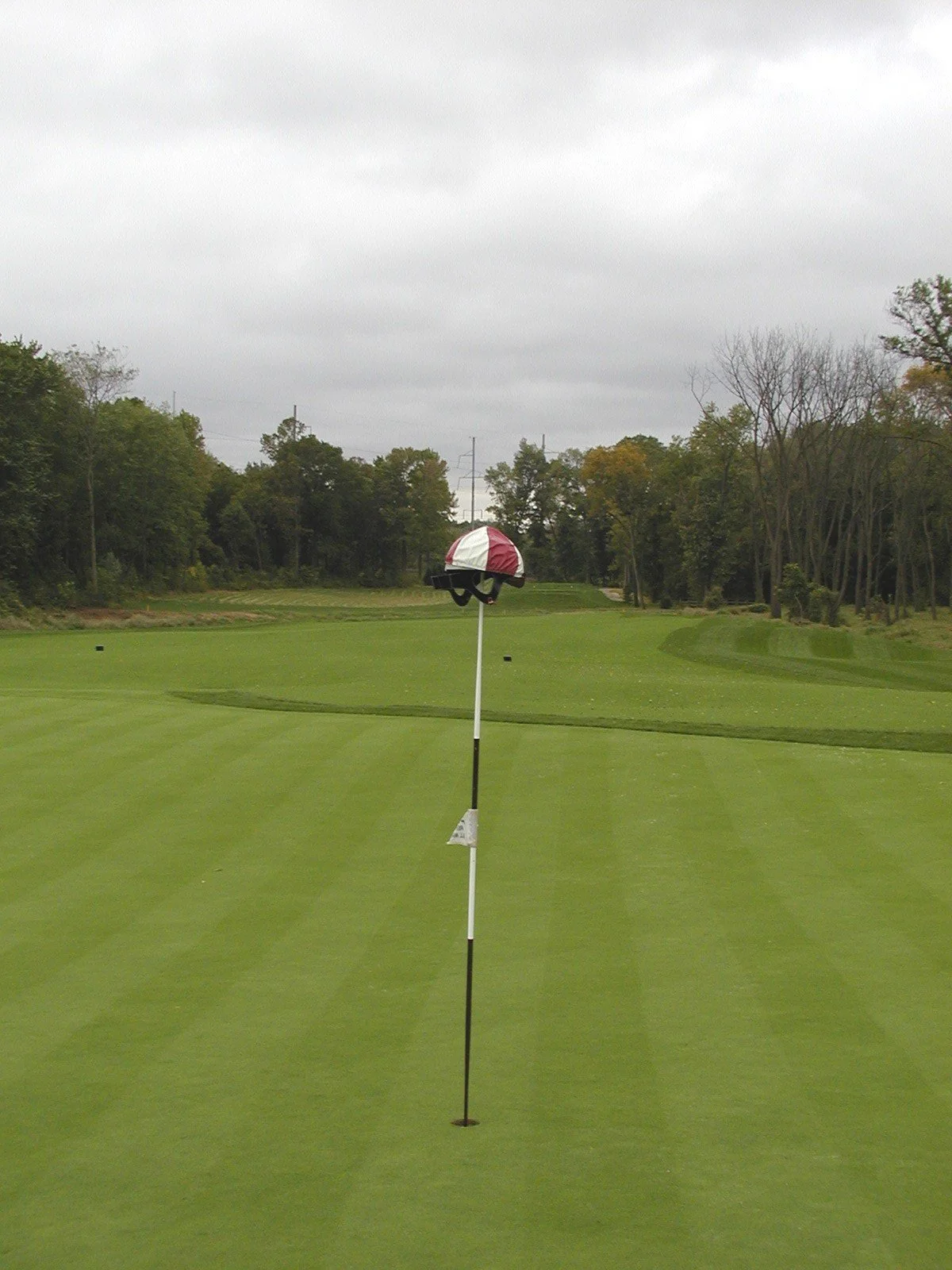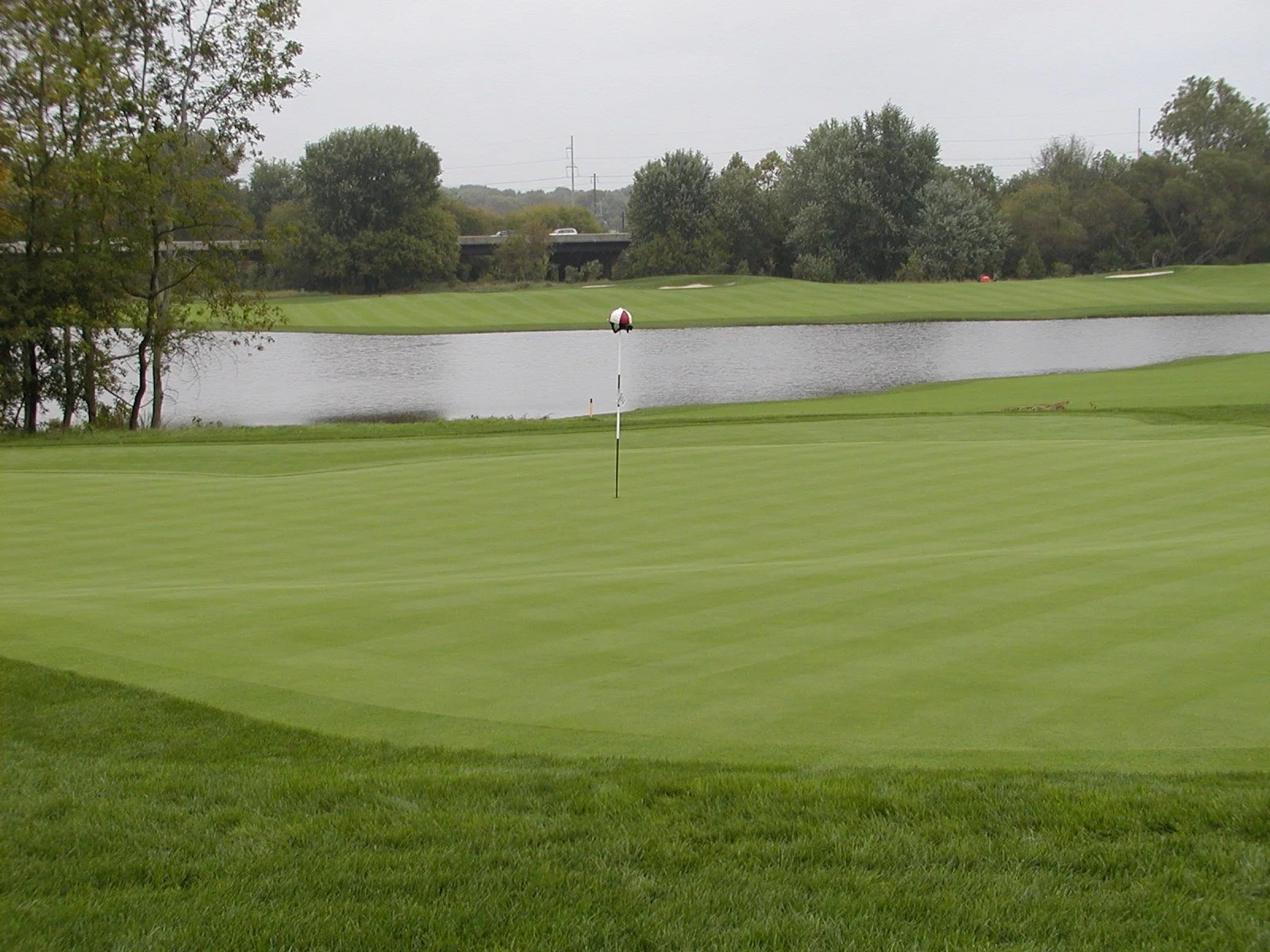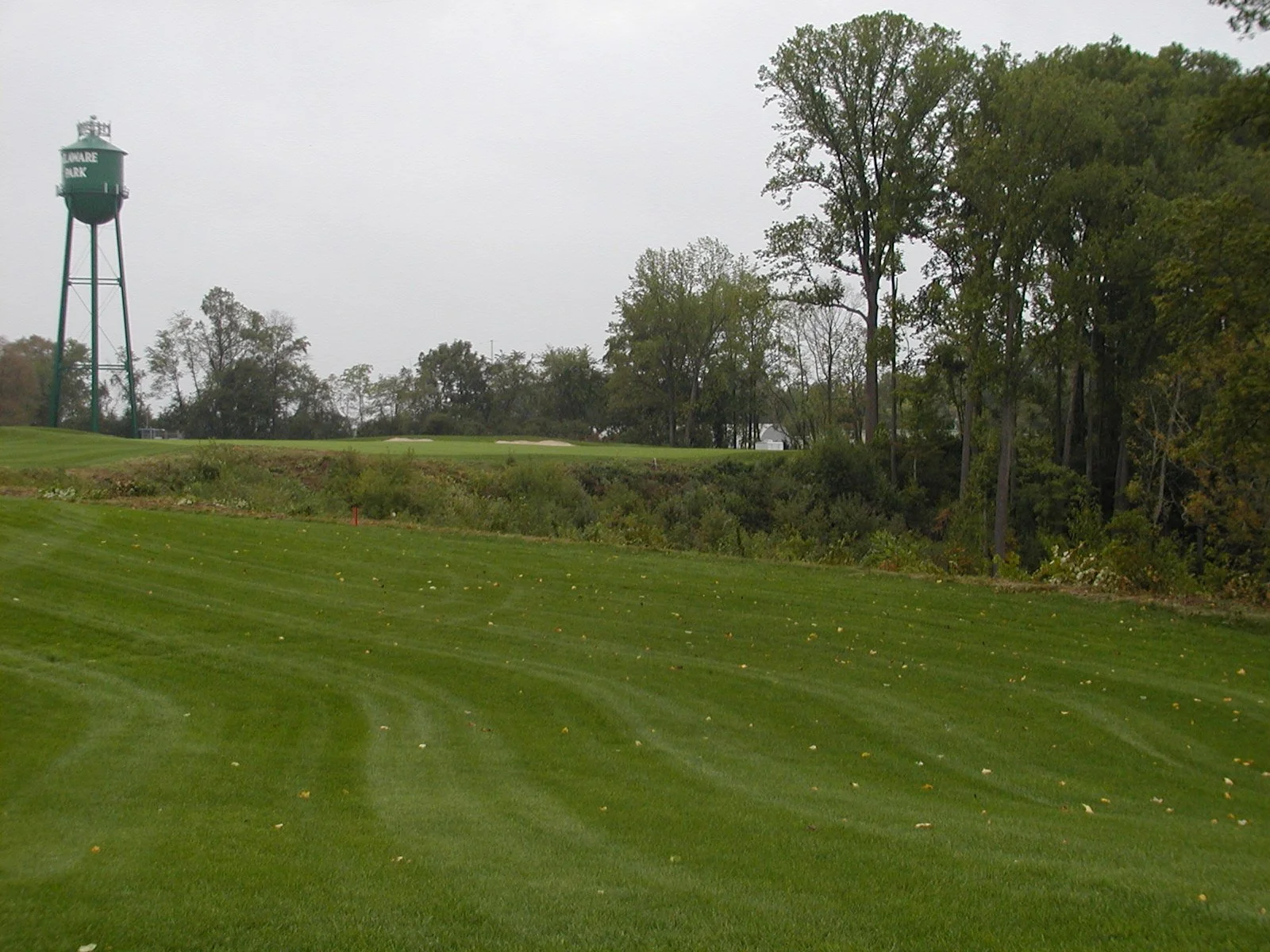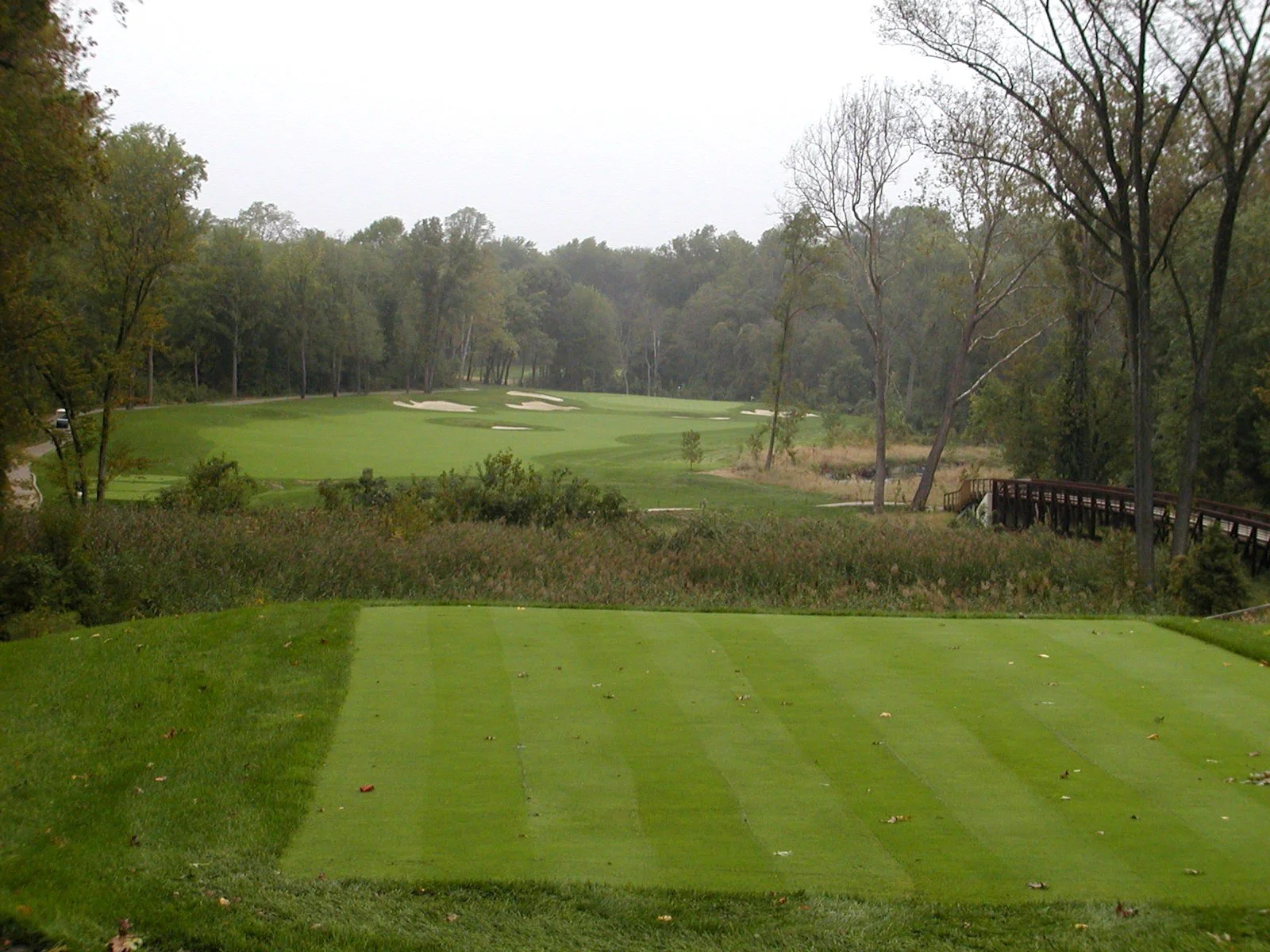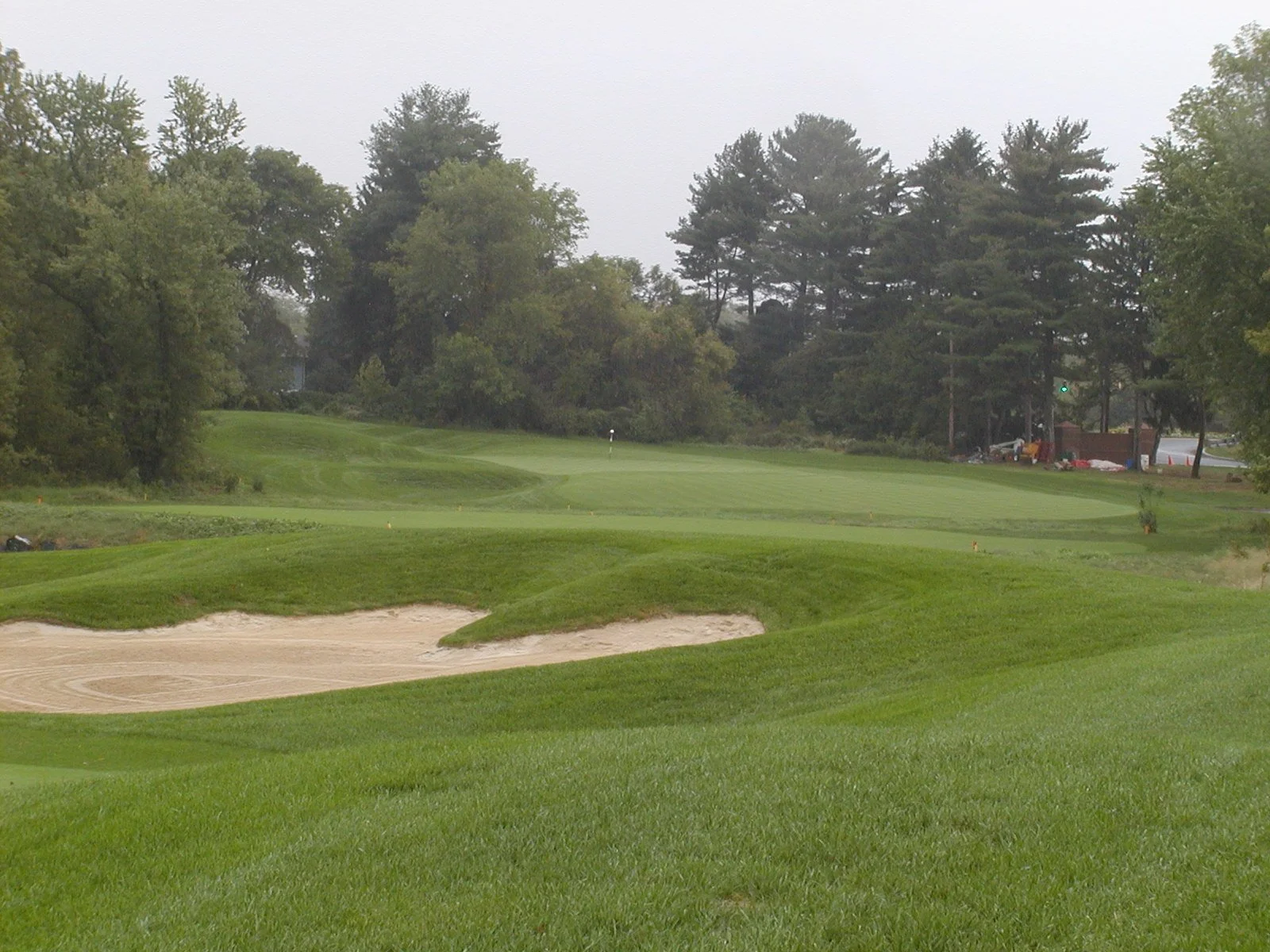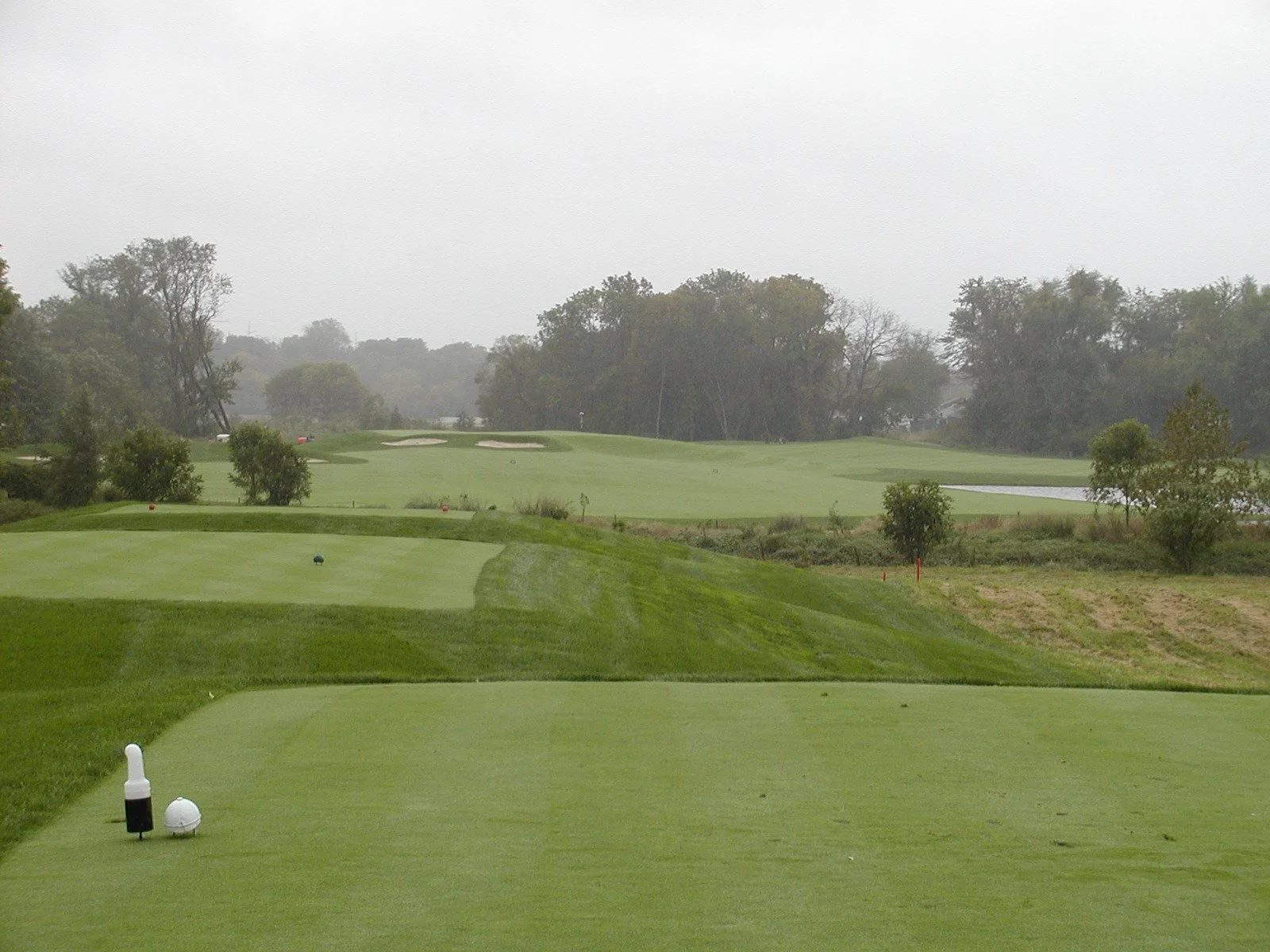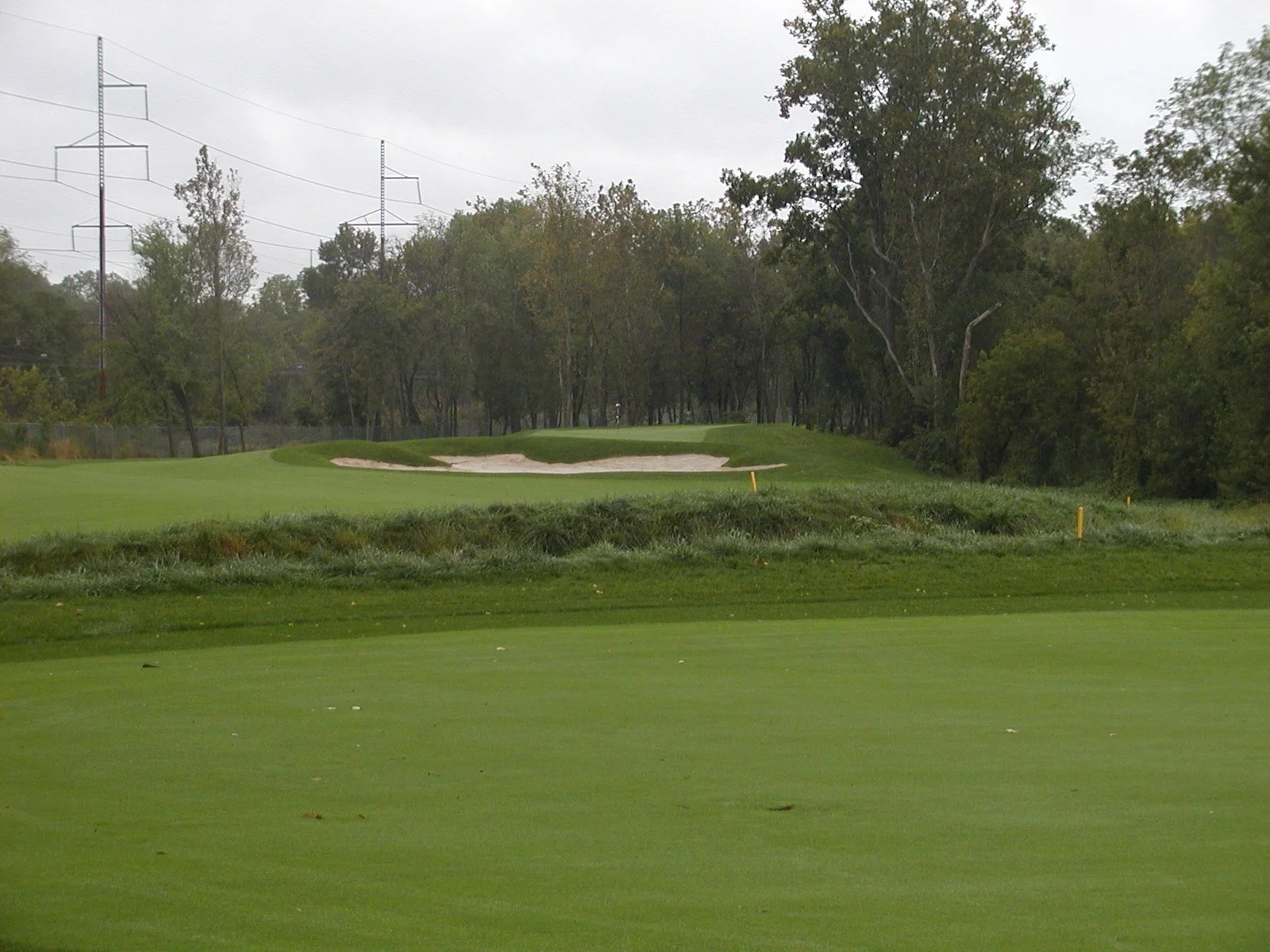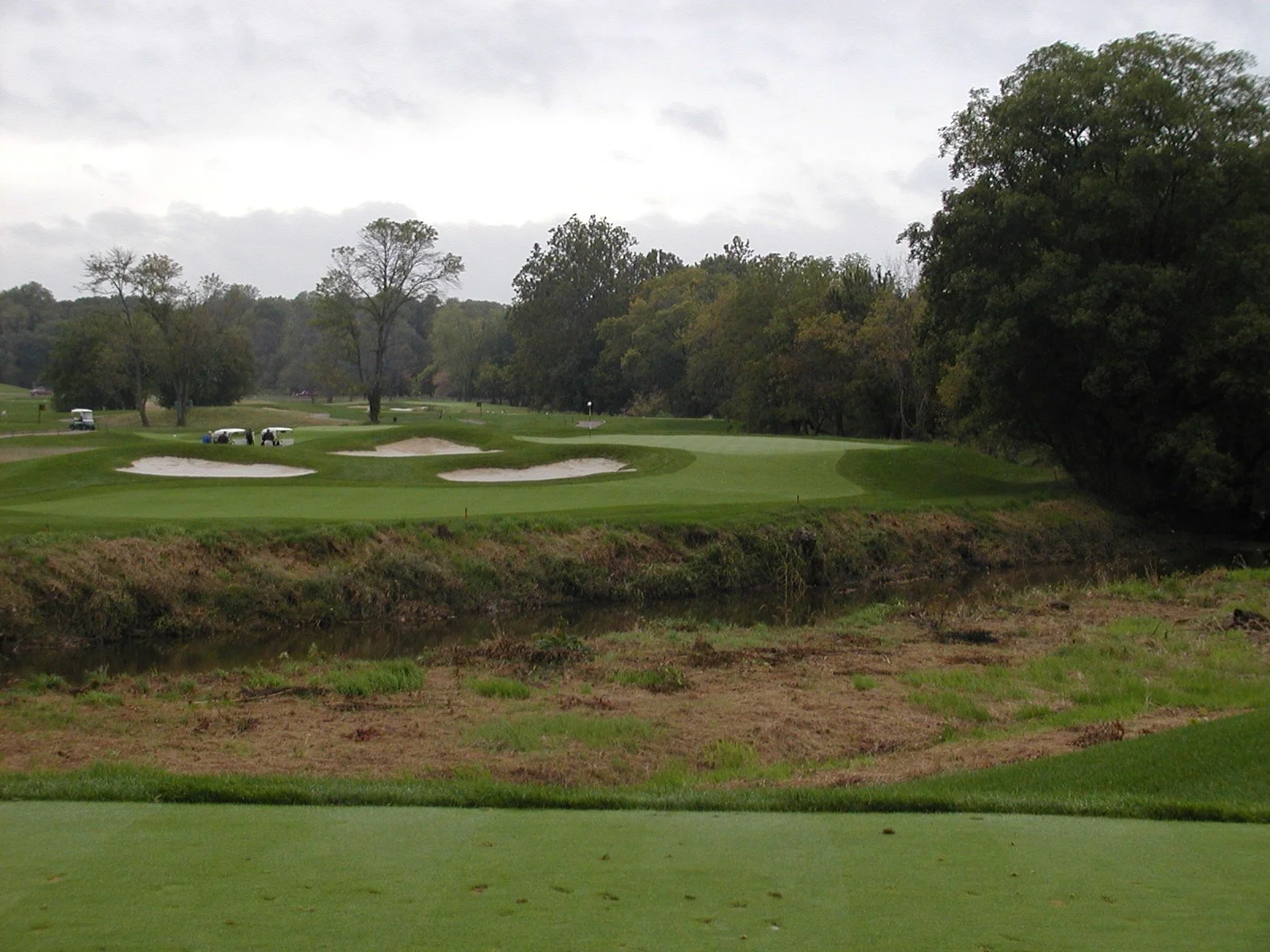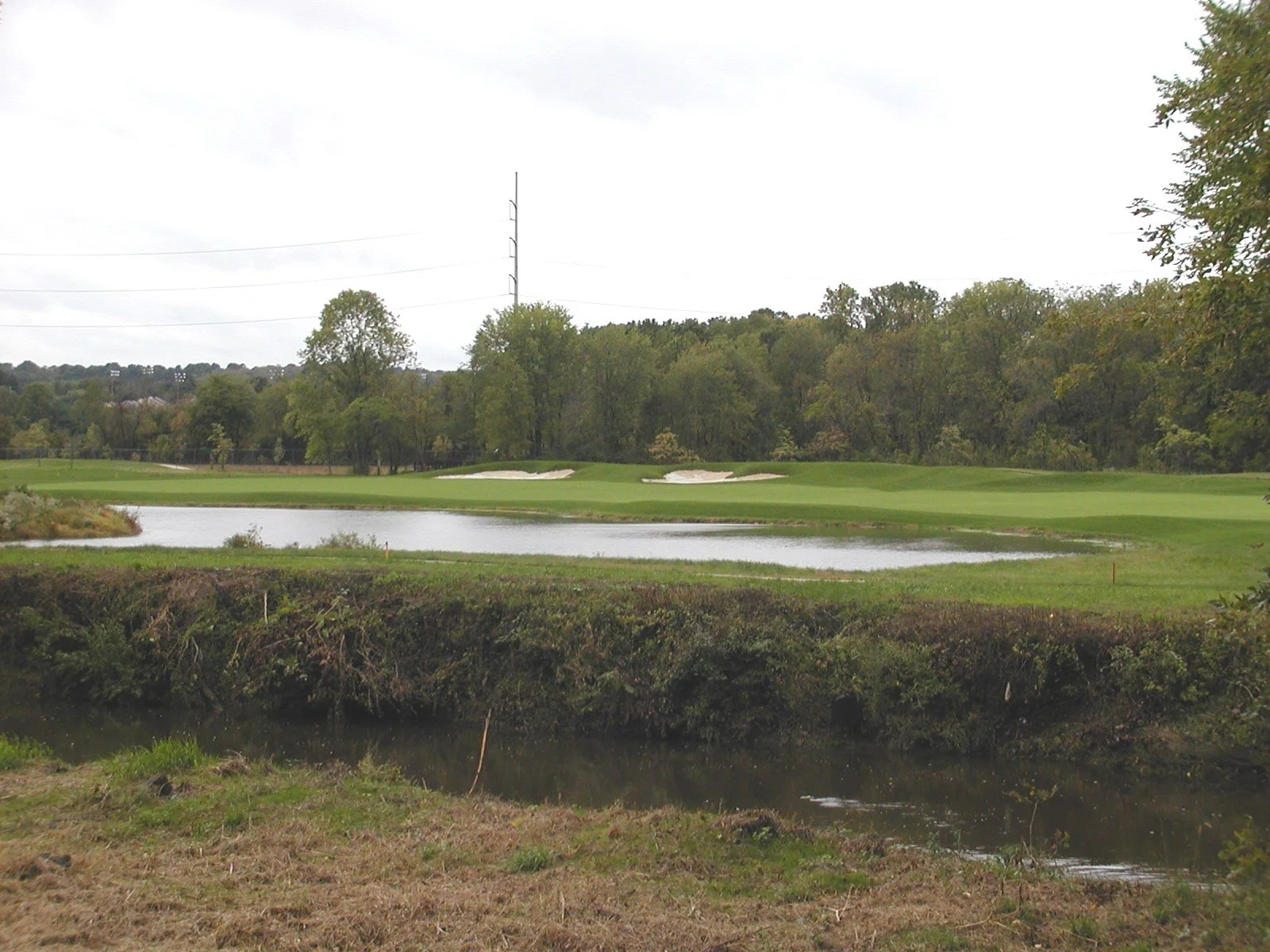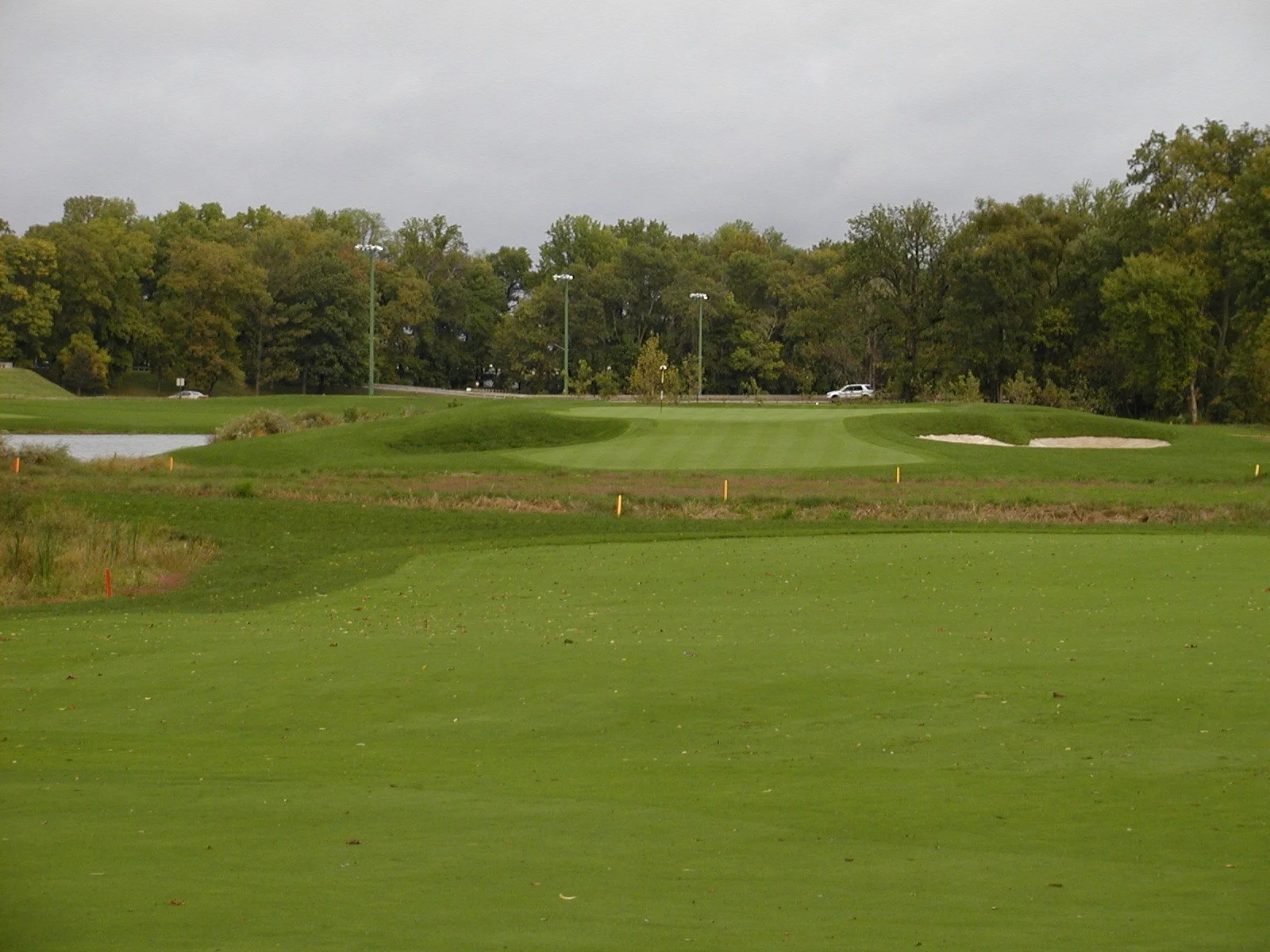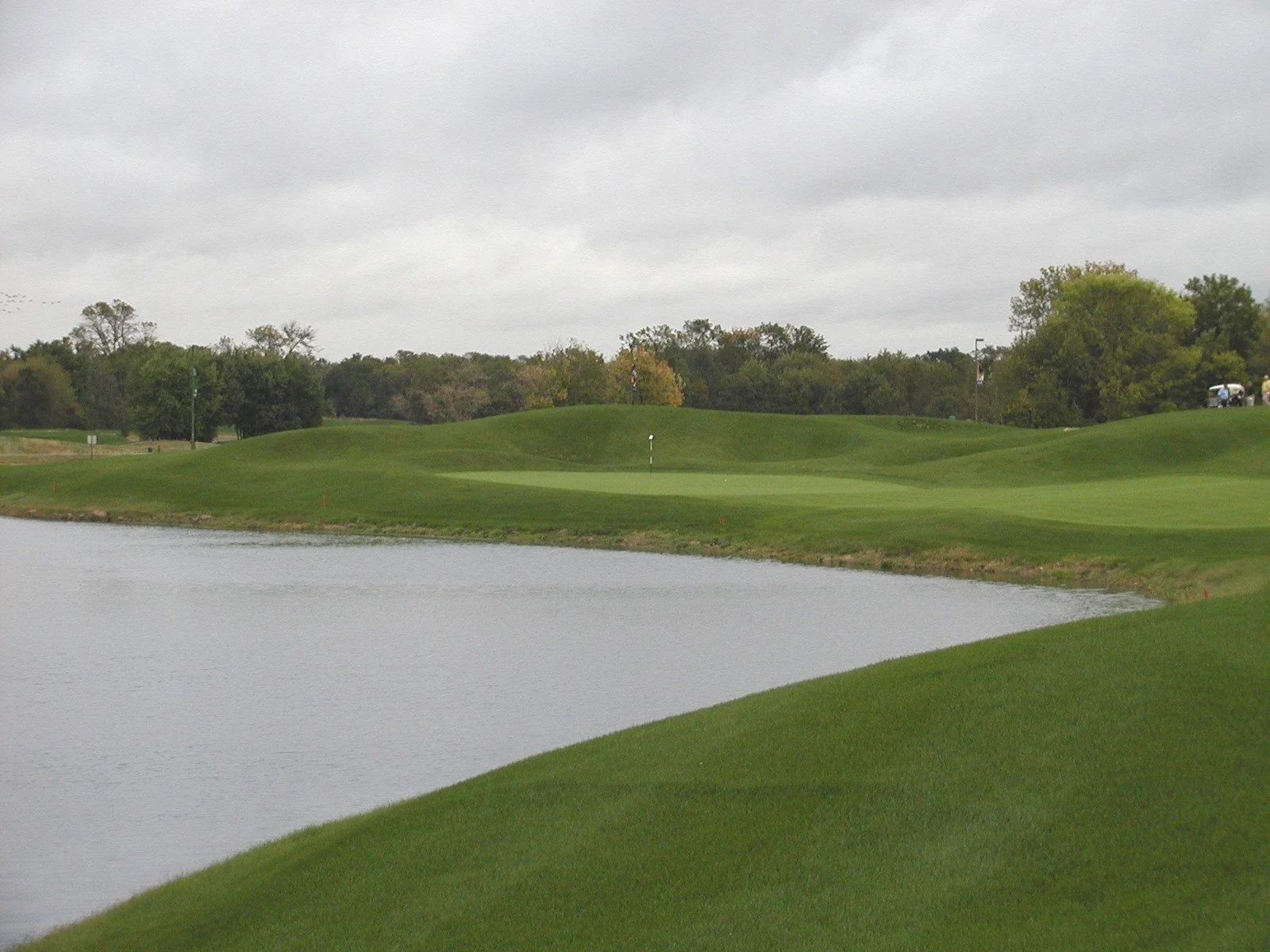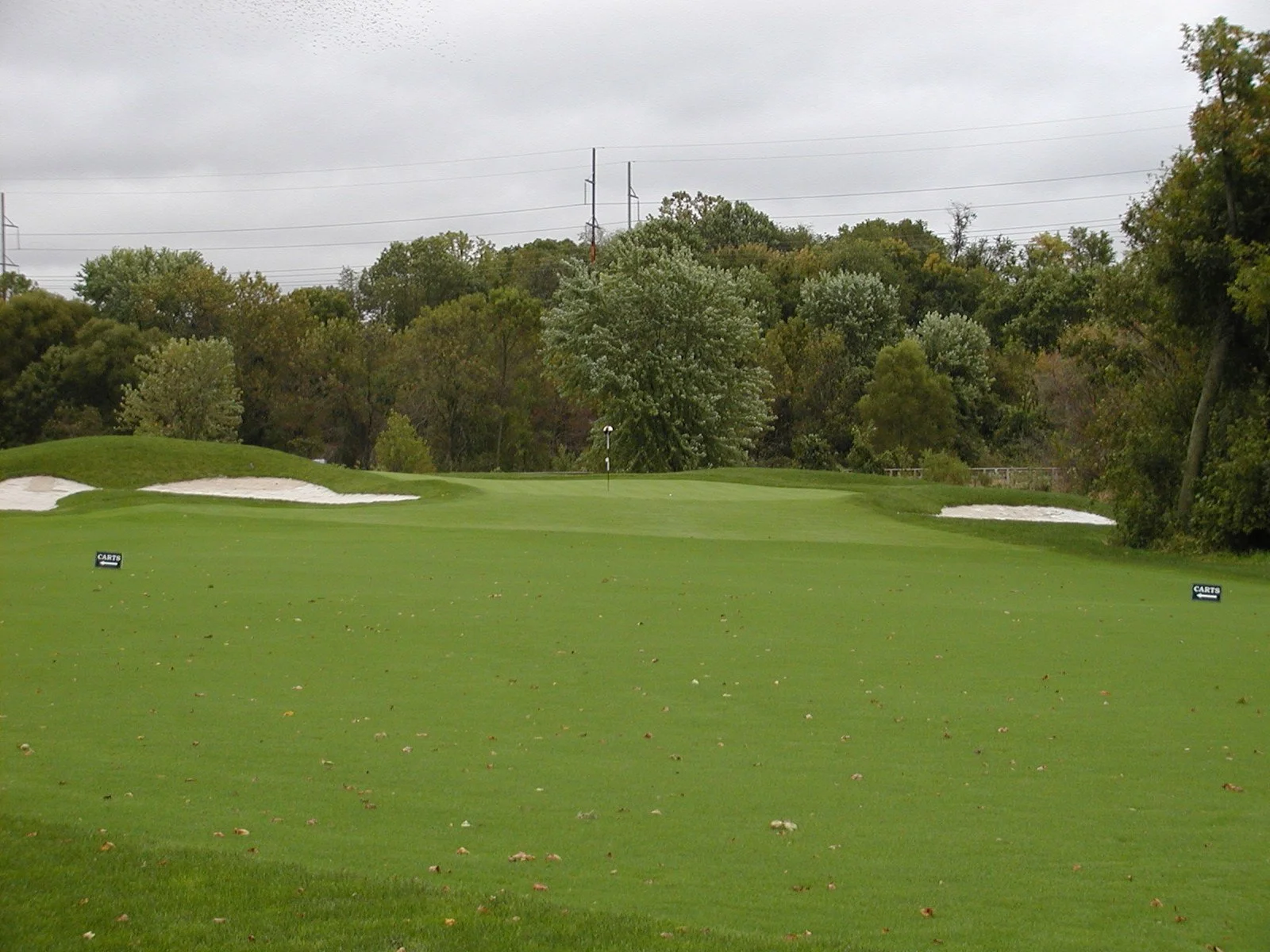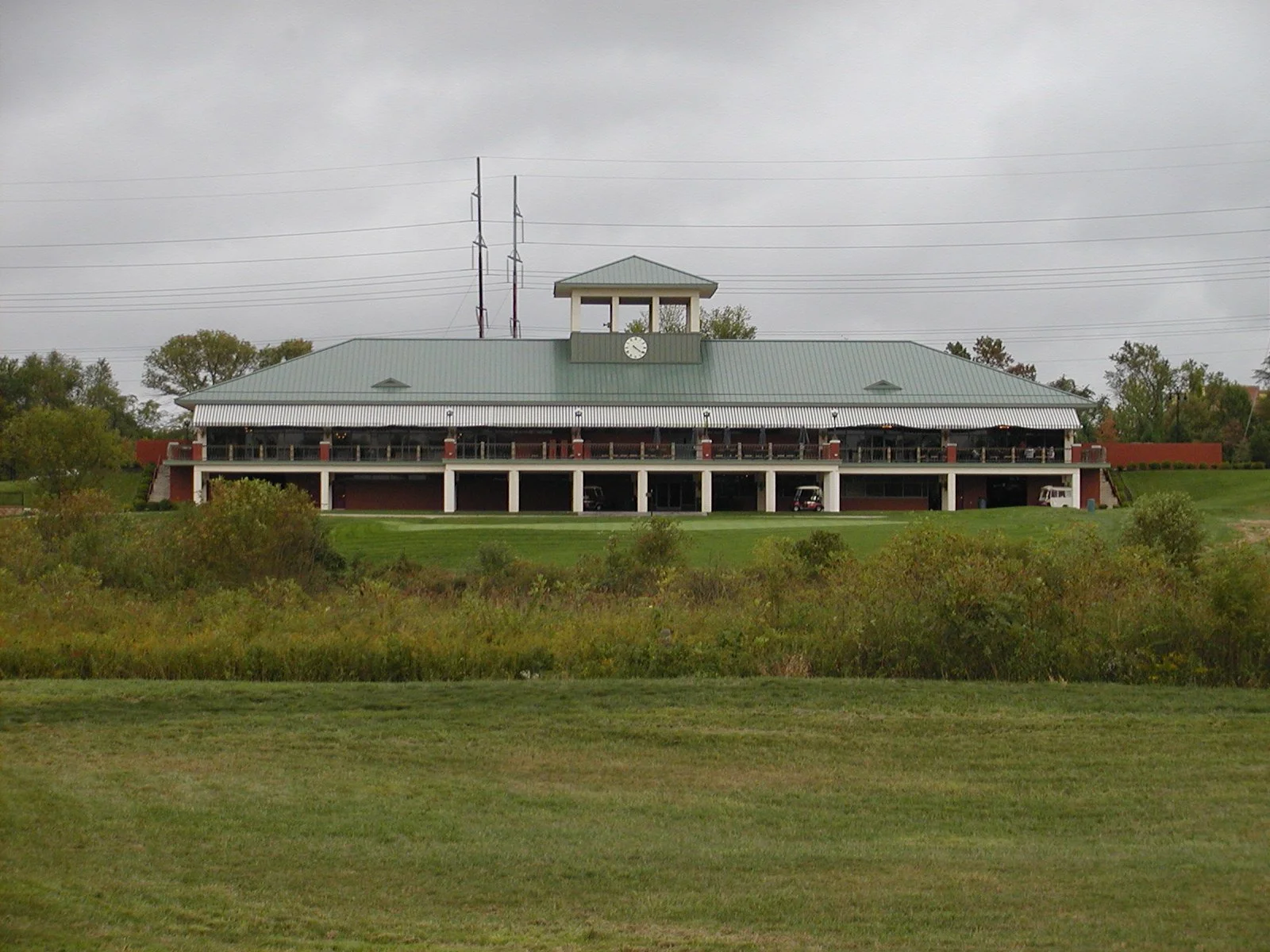WHITE CLAY CREEK COUNTRY CLUB
Course Architect(s): Arthur Hills and Steve Forrest
Year Opened: 2005
Location: Wilmington, Delaware
Slope: 140. Rating: 75.0
Par: 72
Yardage: 7,007
Hole-by-Hole: 1 - Par 4 417 Yds 10 - Par 5 582 Yds
2 - Par 4 382 Yds 11 - Par 4 444 Yds
3 - Par 5 593 Yds 12 - Par 4 314 Yds
4 - Par 3 243 Yds 13 - Par 3 190 Yds
5 - Par 4 400 Yds 14 - Par 4 375 Yds
6 - Par 4 491 Yds 15 - Par 5 550 Yds
7 - Par 3 221 Yds 16 - Par 4 392 Yds
8 - Par 5 515 Yds 17 - Par 3 183 Yds
9 - Par 4 343 Yds 18 - Par 4 372 Yds
Par 36 3,605 Yds Par 36 3,402 Yds
Website: www.whiteclaycreekcc.com
HISTORY: When a course is opened for a short period of time, most expect plenty of growing pains. Not White Clay Creek at Delaware Park. Open for play in June of 2005, WCC is already drawing rave reviews. "We asked Arthur Hills and Steve Forrest to design a course that would complement and not disturb the existing natural environment," said Bill Fasy, COO for Delaware Park. "They did a terrific job and the course has a very mature feel already."
Hills and Forrest have crafted over 180 courses around the world, such as Collier's Reserve in Naples, Florida, Oitavos Golfe Quinta da Marinha in Cascais, Portugal and The Links at Lighthouse Sound in Ocean City, Maryland.
Designing the WCC was not that easy, as the course was built in the flood plain around the meandering tributaries of White Clay Creek. With that in mind, the opening of the course was delayed due to heavy rains which caused flooding in 2004. The added delay however, enabled Hills and Forrest to address some of the worst-case scenarios for drainage. "Because almost all of
the golf course was built in the flood plain, to get the permits we had to design all the tee and green sites seven feet above the creek banks," Forrest explains. "That meant that all the green features are at least five feet above the flood level, above the creek banks. It was a fixed design consideration
for us, but one of which we took good advantage. Any time you can create an elevated tee situation, like we did throughout the White Clay Creek project, it gives you a better, more compelling view of the target area and the overall golf hole itself."
White Clay Creek features 48 bunkers and water on 16 of the 18 holes. "Most courses are lucky to feature a single river crossing, maybe two," said Forrest. "We were fortunate at White Clay Creek to incorporate four on the back nine alone."
REVIEW: Most courses, especially of the public variety, start the player off with a simple opening hole. This is not the case at White Clay Creek. Although just 417 yards from the back tees, this straightaway par four, requires pinpoint accuracy, not to mention plenty of skill. Despite a wide fairway, the short grass is protected by a single bunker, located in the center of the landing area, requiring a 185-yard carry. Driver, however is taken out of the mix, since the fairway ends abruptly at the namesake of the course, as it meanders throughout the venue. Three-metal down the left side and a medium iron to the green is the play. The putting surface is quite long and slopes from back to front and left to right, making club selection key to making par.
Another, somewhat benign hole, the second, is quite straightforward, stretching just 382 yards and devoid of fairway sand. The objective on this hole is hitting the fairway off the tee. Tree-lined on both sides, your tee shot must carry the creek to reach the landing area. Just slightly left of the fairway is deep rough, which could result in a lost ball, while right of the target is water. A short iron will remain to a green guarded on the left-front by a deep trap. The putting surface stretches from right to left and is one of the smallest on the course. A back-left pin could require an extra club, but be careful, as anything long will make a difficult up and down.
Not only the longest hole on the course, but the third most difficult at White Clay Creek, the third is a bear of a dog-leg left par five. Don't be lulled into a false sense of enjoyment, as you drive a couple of minutes to the tee listening to the stables and the horses from within. The drive alone to the tee box is some 700 yards. Standing on the tee, you'll realize right away that a big drive and second is a must. Once again, left of the landing area will present problems, so bail out right and leave yourself a longer second shot. Your layup will need to be accurate, as a large lake guards the right side and sand and deep rough flank the left. The green is slightly elevated and quite
receptive, despite its narrow features. Sand guards the left and a chipping area gathers missed shots to the right. The putting surface slopes from left to right and features a ridge down the left-center. A good hole to make par on.
All you need to know on the fourth is that it's a whopping 243 yards from the gold tees. The best play might be to just layup short of the green in the fairway leading up to the putting surface. This can set up a short chip in an effort to save par. If you feel bold, take out your three-metal and rip it. No sand, but mounding left and a grass bunker, short and right. The green is not too tricky, but a back-right flag will require a driver to reach. Making par on four will be an extraordinary feat!
Not known as a signature hole at White Clay Creek, the fifth is one of my favorites. A sharp, dog-leg right, this hole is only 400 yards from the tips, but requires a carry over a ravine, as it plays slightly uphill. The key is to aim at the Delaware Park water tower and cut it back towards the hole. Just remember, too much right and tall trees will come into play. Two fairway bunkers down the left side could catch the long hitter who runs through the fairway. A short iron will remain to a green that's quite long and features a deep trap, short and right of the putting surface. The slope of the green runs from left to right and is quite slick.
You'll know if you chose the right tees to play when you get to the sixth. Just shy of 500 yards, this par four is quite spectacular and very, very difficult. Your tee ball requires a 250-yard rip just to reach the fairway and it must avoid the deep rough and trees on both sides. The creek wanders in
front of the fairway and down the right side to make things interesting and if that wasn't enough, a 20-yard wide trap looms in the center of the fairway, reachable from the forward tees. Since the hole is so long, three traps are placed strategically down the fairway, some 50-75 yards short of the green, while three additional bunkers surround the putting surface. For good measure, the green is the longest on the front nine and tilts from left to right. If you didn't figure it out already, this is the number one handicap hole on the course.
A classic par three, the seventh is a beaute, stretching 221 yards. This hole is framed exquisitely by the trees beyond the green, not to mention the three traps guarding the entrance to the putting surface. This green is very long and slopes from back to front with a humpback in the middle. Avoid the two bunkers on either side of the opening portion of the green and you should walk away with par.
Waterloo best describes the par-five eighth hole. Four fingers of water from White Clay Creek jut out into this dogleg left, as you attempt to traverse this gem. The play off the tee is down the right side of the fairway, thus avoiding the water, although bringing a pair of traps into play. Decision time awaits your next shot. Go for the green with a fairway metal or layup in between two of the fingers of water. Most would layup, leaving a little wedge to a fairly, descent sized green. However, the aggressive play should be to go for the green in two, as there is plenty of room, short and right of the green to bail out. Devoid of sand at the green, a simple chip remains, thus setting up birdie.
One of the easier holes on the course, the ninth is a mere 343 yards in length. Not so fast. Despite an overly wide fairway, the landing area is guarded entirely down the right side by the large lake that appeared on the third hole. The key is to choose the correct club off the tee, setting up your most comfortable distance to the green. The difficulty of the ninth is the putting surface, which is severely elevated and features a pair of traps just left of center. Another tiny green, the most difficult pin is short-right, which will play havoc with any approach not struck cleanly. Even from the red tees, which are located near the third green, it requires a direct carry over the lake to the fairway. A fun hole to complete the opening nine.
The inward nine opens with a lengthy par five, bending to the right with the creek running down the entire right side. Off the tee, avoid at all costs the three fairway bunkers down the left side, not to mention the trees down both sides of the landing area. Your next shot must carry over a tributary of the creek and either play short of or carry over the enormous fairway trap that juts out into the landing zone. Your approach shot is made difficult by the narrowness of the green. Although quite long, the putting surface is only 10 paces wide and slopes from back to front. Distance control can produce positive results.
Another exciting hole on the course, the 11th is great dogleg right par four, that bends with the flow of White Clay Creek from tee to green. A strong fade is the play off the tee, as you carve your first shot towards the fairway. Don't be too greedy, as water looms large right and crosses the fairway closer to the green. Your approach shot with a short to mid-iron must avoid the long, greenside bunker on the left. The putting surface is quite long, making second shots difficult to get close. A tough hole to birdie, let alone par.
If the wind is right and the conditions are firm, then the 12th could be the most exciting hole on the course. Just 314 yards in length, this par four can be reached with one precisely struck shot. However, certain key elements need to be in place for this to occur. First of all, a nice breeze behind your back for starters. Second, a high, solid blast with a driver to carry the meandering creek that runs down the right side and in front of the green. Finally, a little luck. The sensible play, is an iron or fairway metal short of the creek, leaving 100 yards to the smallest green on the back nine. Either way, this is a definite birdie chance.
The par-three 13th can certainly be unlucky if your tee shot misses the green. Three bunkers are featured prominently, short and left of the putting surface. Second, the green is very long and undulating and third, trees and White Clay Creek flank the right side. To make matters worse, any shot long and left will result in bogey or worse, as the slope to the side of the green, repels all balls toward the deep rough.
It's time to be aggressive in an effort to get one back, as you play the 14th. Just 375 yards is all that stands in your way to make birdie. Lock and load with the big stick as you play this slightly downhill par four. Just be mindful of the creek that encompasses the entire right side and the two fairway traps down the left. A short iron awaits to another slender green that is protected by a pair of deep traps, short and left of the surface. Certain pin positions can make this green quite tricky.
The final four at White Clay Creek provide a stern test as you head for home. First up is the 550 yard, par five 15th. Doglegging sharply to the left, your opening shot requires a sweeping draw from the back tee, cutting off as much of the lake in front of you as possible. Going for the green in two is not the prudent play, as the fairway and green are very narrow. With that in mind, the proper shot would be to layup, short of the fairway bunker, leaving yourself a nice full wedge to another narrow green. Complications could arise, as water remains down the entire left side and out of bounds down the right.
What makes the 16th hole difficult is the importance of accuracy. To start off with, water guards the left side of the landing area, jutting out right to the edge of the fairway. Bailing out right will only result in a longer second shot, or worse, an approach from the rough. Your second shot must carry across two fingers of water and deep rough en route to the green which is protected, front-right by sand and left by, you guessed it, water. The putting surface is again long and narrow, making your approach even more difficult.
The final par three on the course is certainly the most dramatic, with water down the entire left side of the hole. The raised mounding behind the green makes for great theatre, as players come down the stretch and head for home. With the wind up, this can be a three-to-four club swing, as there are no trees to protect from the elements. A mid to long iron should suffice to the biggest green on the course, at least 25 paces in length. To err right is human, to miss left is jail.
Last and certainly not least, the 18th hole epitomizes what White Clay Creek is all about, accuracy and control. Although the tee box area is wide open, the landing area is very narrow, with trees both right and left and of course, water to cross. Just 372 yards from the back buttons, the finale at WCC still requires driver off the tee to clear the creek and reach the landing area. A flip wedge will remain to a long, narrow green with sand on both sides of the putting surface. The slope of the green is from back to front, so play below the hole to set up your best shot at birdie, a great way to finish your round.
FINAL WORD: It's only a matter of time until White Clay Creek begins to receive accolades from around the golfing community. The course is a first-class venue complete with a Golf Academy, indoor and outdoor practice facilities, an exercise center and a 40,000 square-foot clubhouse, complete with 250-person banquet room.
The factors that make this place unique are numerous. First of all, this course is for all types of players. With five sets of tees, ranging from 4,827 yards to just over 7,000, WCC is for
beginners, as well as the best of players.
Secondly, the track is spread out over 230 acres, surrounding Delaware Park, the only thoroughbred race track in the state. Next, White Clay Creek wanders throughout the course, playing havoc on every hole.
The conditioning of the course, even though opened only a short period of time, is outstanding to say the least. How about the flag sticks? Sitting on top of each flag pole is the club's signature jockey's helmet, the "Cap."
Finally, it's public! Yes, everyone can play this course and the price is right. From a low of $65 in December to a high of $110 during the summer months, WCC is most definitely affordable. To play the course, players must first be a registered member of the Delaware Park Player Rewards Club, at no cost. This of course, is one way of enticing you play at the track or the slots casino. Most courses try to nickle and dime you, not White Clay Creek.
With your green fee comes use of a golf cart, range balls and full use of the locker facilities, including the fitness center and sauna. Racing from April through November, slots every day of the year and golf from March through December, the bottom line, White Clay Creek is a winner.
